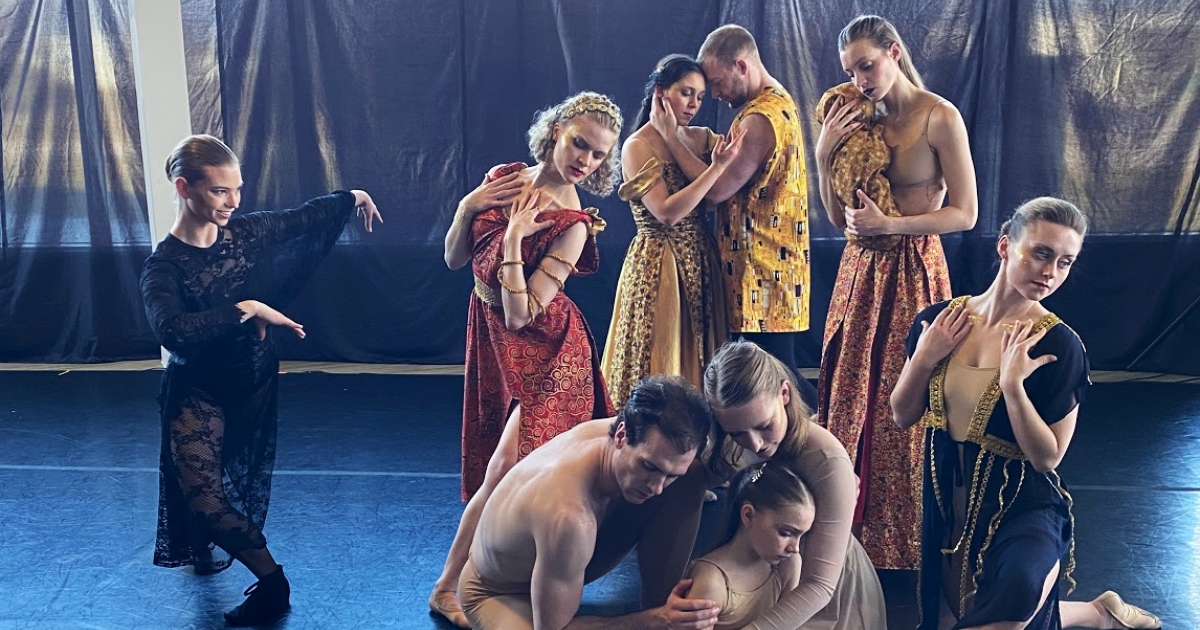The endeavor to create art, especially a fine art that requires great dedication and technical skill to master, is to be commended. Likewise, an organization dedicated to the development of those artists and opportunities for them to perform that art, especially in a new way, is a gift to its community.
Deos Contemporary Ballet touts itself as “Michigan’s newest professional dance company,” according to Executive Director Andrew Hoekstra, and though they’ve been in existence in Grand Rapids for four years, they’ve newly been designated as a non-profit business, and their first full-length season launched last November. They pride themselves on putting dancers first and showcasing women’s choreography, which, even in 2023, is pretty revolutionary.
Their latest offering, Ember Series 23, focuses on choreography created by Artistic Director Tess Sinke, and includes four world premieres. The dances are largely inspired by works of art, namely Keats’ poetry and life, Vivaldi’s Four Seasons, and the paintings of Gustav Klimt.
“My Dearest Girl” is a romantic pas de deux between Michael Burke and Leah Haggard as John Keats and Fanny Brawne in which they literally and figuratively exchange love letters amid the backdrop of his pending untimely death. A sweet blend of classical and contemporary yet set in the 19th Century, and at turns happy and joyful with lovely lifts and turns in attitude as well as dark and tortured, the dance itself is a love letter set to Williams, Schumann, and Britten, with minimal set pieces and many sheets of paper, one of which the two dancers pass between them and press between their hands almost as if a pas de trois.
Vivaldi’s violin concerto in f minor, op. 8 no. 4, the “winter” of his Four Seasons, is the inspiration for “Frost and Ember,” the second of what will ultimately be a complete ballet in parts. The piece begins as a very lively pas de quatre; mostly made up of turns in every direction, the bare-legged dancers in blue and white leotards overlaid with matching floor-length chiffon have terrific musicality. The turn-driven choreography continues with a pas de deux with lifts and a gentler tempo.
The second act, entitled “Art of Gold,” is inspired by seven Gustav Klimt’s paintings and Sinke said her intention is to ultimately create a full-length ballet of movement driven by the geometric shapes and curves of Klimt’s work as well as larger themes of love, mortality, and the femme fatale.
From impassioned solos to a multi-generational pas de trois to a powerfully romantic pas de deux, the dancers here are wonderfully emotive. Set to Jewish music from Ernest Bloch and Shostakovich, there is a Middle Eastern feel and terrific longing to the extended piece that seems to imply a larger story on which to hang the images and emotions, particularly if it is to become its own ballet.
Sinke asked the audience to envision it on a huge stage, with ornate costumes and set pieces, perhaps lighting design, rather than on an ersatz stage in a photography studio with a fluorescent overhead light and two lanterns on the floor stage left, a bit of marley rolled out with fabric hung on the floor-to-ceiling windows to partially block the headlights of cars whizzing by.
No doubt this company’s performances will look very different when presented in a theater, and they clearly have the ambition to make that happen. Their May performance is set to be at St. Cecilia’s and will likely be a very different experience.
Ember
Deos Contemporary Ballet
March 3-5
deosballet.com
facebook.com/DeosBallet





